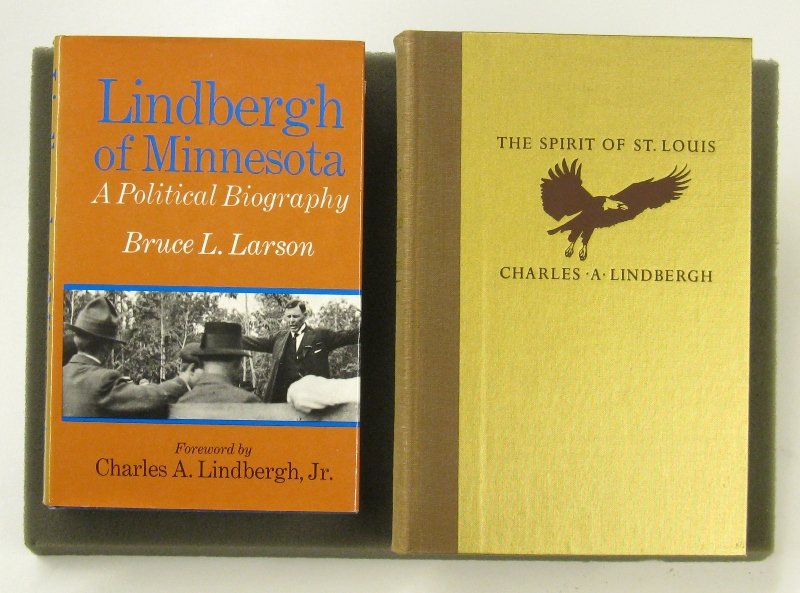 |
| Oscar Wilde autograph, dated March 22 (1898?). |
[Please note that digital images in this posting are mostly smaller than usual.]
A few weeks ago I struggled with an anomalous copy of Oscar Wilde's Ballad of Reading Gaol. The problem was that our copy did not match any described copies that I could find in online or printed bibliographic resources. I did finally decide to catalog the item as possibly a "second edition" copy with a first edition title page.
One trait of that copy stood out, however: there was what appears to be an authentic signature of Oscar Wilde pasted onto the verso of the title page. Pretty cool to find an autograph of a famous person in an unexpected spot. In fact, recently I have come across several such surprises.
HMML does have collections of signatures that were intentionally gathered--the best-known example is the Kritzeck Collection, which contains dozens of signed documents from popes, saints, kings, emperors, tsars, and presidents. Visitors are always impressed when we can pull out letters signed by Henry VIII or Elizabeth I of England. This collection came to Saint John's University in the 1960's.
More recently we have been inventorying a very large collection of handwritten documents from Italy, divided into sub-collections of popes, nobility, cardinals, artists, and other noteworthy (chiefly Italian) personalities. Unfortunately, most of the persons represented in the Jude Koll, OSB, Collection are hardly household names today, although among the nobility is at least one letter signed by Louis XIV of France. But we continue to work on making these materials available to the outside world.
 |
| Biography of Charles A. Lindbergh, Sr., and the younger Lindbergh's story of his historic flight in 1927. |
My initial instinct was to send Lindbergh of Minnesota (1973) to our general university library for the circulating collection, only to find that it had been autographed on the title page by both the author (Bruce L. Larson) and by Charles A. Lindbergh, Jr.!
 |
| Autographed title page. |
 |
| This copy of the Spirit of St. Louis is signed on the half-title page by Anne Morrow Lindbergh. |
It is not entirely unusual for me to find signatures in our books, although most often they are signature of the author or are there to verify the authenticity of the book. Many of these appear in colophons and include prominent book artists like Eric Gill or Rockwell Kent. Among the author's signatures we have Tennessee Williams, Kurt Vonnegut, Maud Hart Lovelace, Sinclair Lewis, and several others.
Another name that appears in our books is Harry Reasoner (1923-1991), the famous television journalist, who studied for a while in Minnesota, and who wrote a novel that takes place in the Twin Cities--Tell Me About Women (1946). Younger readers may not remember this name, but for many baby boomers, Reasoner was regular presence in national television news for decades.
 |
| Cover of Harry Reasoner's Tell Me About Women (1946) and Harold Stassen's Where I Stand (1947). |
 |
| Inscription by Harry Reasoner. |
 |
| Former Minnesota governor, Harold Stassen (1907-2001). |
This leaves us with two final examples today: James J. Hill and Henry H. Sibley.
Like Stassen, Henry Hastings Sibley (1811-1891) served as governor of Minnesota, being the first in that capacity (1858-1860). He also led troops during the 1862 Dakota War, and his stone house still stands in Mendota, Minnesota.
 |
| "with best wishes of his old friend" |
In a copy of the second edition of Edward Neill's The History of Minnesota from the Earliest French Explorations (1873), we find an inscription from H.H. Sibley to "N.W. Kittson with best wishes of his old friend." Suddenly, this volume, which was merely a duplicate copy (and not the one in better condition) previously, had become a link back to the earliest days of statehood in Minnesota! Not only that, the inscribee (so to speak), is none other than Norman Wolfred Kittson (1814-1888), a prominent fur trader and entrepreneur in early Minnesota, and for whom Kittson County (in the uppermost northwest corner of Minnesota) is named.
 |
| Edward Neill's History of Minnesota came out in at least five editions between 1858 and 1883. |
Finally, one of my favorites, because it is linked directly to the name of our library: HMML has also received two copies of James Jerome Hill's Highways of Progress (1910) as part of the Anderson Collection that came in 2012. I was somewhat disappointed to find that the Saint John's University library already reported having a copy of this title, only to find upon further investigation that their copy was a 1960 reprint, while our two copies (both signed by James J. Hill) were from the original 1910 edition.
 |
| Title page of Highways of Progress (1910). |
One of the two copies is inscribed to Walter Henry Sanborn (1845-1928), who came to Minnesota from New Hampshire in the 1870's and practiced law for several years, before being named to a federal judgeship in Minnesota in 1892, where he served until his death.
 |
| Inscription to the "Hon. Walter H. Sanborn," dated Oct. 12th, 1910. |
As with so many items in our special collections, these books bear witness to friendships, collaborations, contacts, and other kinds of special relationships of the past. These names bring back to life a time that would be harder to imagine without these very human indications that the book actually passed through the hands of the author and/or belonged to someone significant in Minnesota history.
Perhaps on another occasion I can write about some of our other "autographs!"
Peace.

Hi,
ReplyDeletePlease remember this one.
Nursery Schools in Kandhajavadi